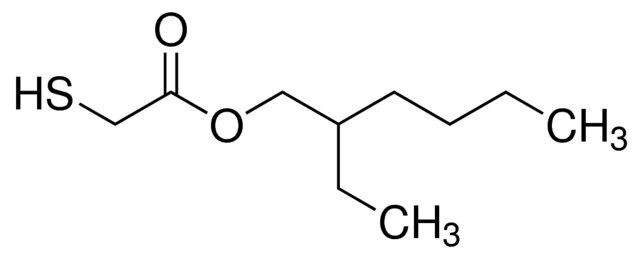2-Ethylhexyl thioglycolate / 500 ML
Safety Information
Hazard Statements
Precautionary Statements
Pictograms
Properties
| Signal Word | Warning |
| Flash Point (C) | 117.5 °C - Pensky-Martens closed cup |
| Flash Point (F) | 243.5 °F - Pensky-Martens closed cup |
| Density | 0.972 g/mL at 20 °C (lit.) |
| Boiling Point | 255-260 °C (lit.) |
Product Description
2-ETHYLHEXYL THIOGLYCOLATE is a chemical compound commonly used as a hair straightening agent in cosmetic formulations. It works by breaking disulfide bonds in the hair, allowing it to be reshaped into a straighter form.
Application:
2-ETHYLHEXYL THIOGLYCOLATE is applied in hair care products such as relaxers and straightening creams to achieve straighter hair. It is also utilized in the textile industry as a dyeing assistant to improve color fastness.
Articles:
- Simulated gastric hydrolysis and developmental toxicity of dimethyltin bis(2-ethylhexylthioglycolate) in rats
Publication Date: 22 February 2023
Dominik Kirf, Richard Costlow, Hans Nasshan, Peter Frenkel, Donna Mondimore
https://doi.org/10.3389/ftox.2023.1122323
- “Simulated gastric hydrolysis and developmental toxicity of dioctyltin bis(2-Ethylhexylthioglycolate) [DOTE] in rabbits and mice”
Publication Date: Available online 26 April 2017
Richard D. Costlow, Hans Nasshan, Peter Frenkel
https://doi.org/10.1016/j.yrtph.2017.03.026
- Assessing the Suitability of Unplasticized Poly(Vinyl Chloride) for Museum Showcase Construction
Publication Date: 21 Aug 2020
Michael J. Samide &Gregory D. Smith
